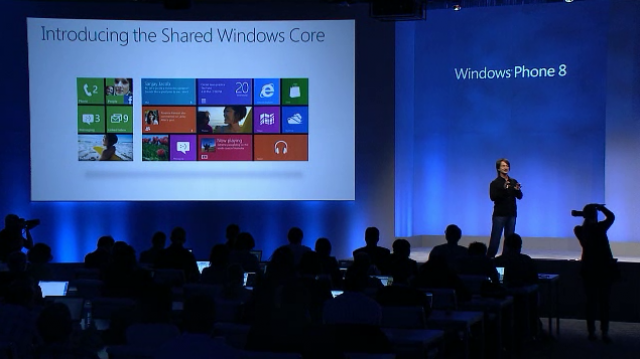 Microsoft has done as expected: revealed (and named) Windows Phone 8. Just as Windows 8 took cues from the original Windows Phone design, Windows Phone 8 will take much of its core technology from Windows Phone 8.
Microsoft has done as expected: revealed (and named) Windows Phone 8. Just as Windows 8 took cues from the original Windows Phone design, Windows Phone 8 will take much of its core technology from Windows Phone 8.
The most impressive announcement is that the two operating systems — Windows 8 and Windows Phone 8 — will feature a “shared core” or a combination of kernel, graphics abilities and more. This will mean a “greater choice in hardware,” scaling up and down according to price and capabilities. There will be lots of experiences and syncing between the phone and PC — developers will have “an incredibly easy transition” between the two platforms. This, according to Microsoft, is better for consumers and hardware partners.
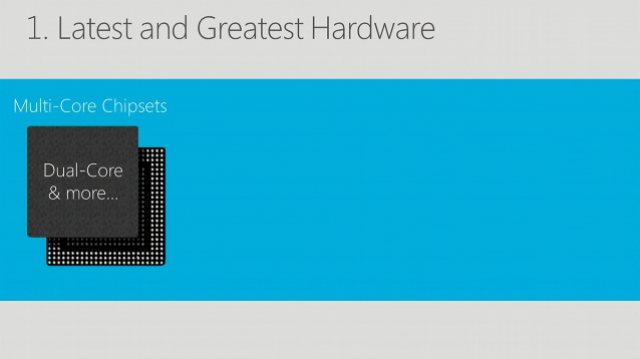
We’re looking, this fall, at multi-core chips coming soon to new Windows Phone handsets. This is a long time coming and something that users have been clamouring for as the hardware in iPhone and Android improves year over year. Microsoft is touting great battery life for multi-core devices, too.
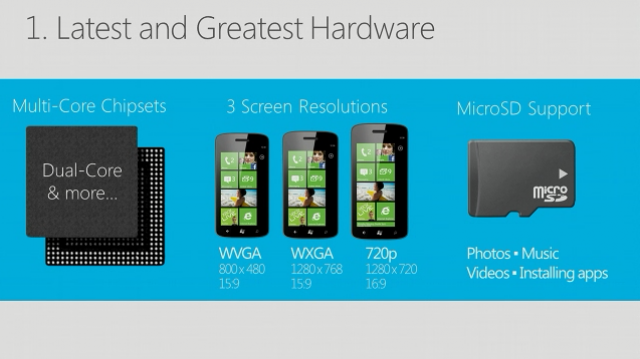
Windows Phone 8 will also support multiple screen resolutions, both in high definition. 720p (1280×720) and 768p (1280×768) are going to be the only two resolutions available for Windows Phone since there will be backwards compatibility with existing Windows Phone 7 apps and games.
There will also be removable microSD card support; this means that users will be able to offload some media onto removable media and not have to worry about purchasing a high-storage phone initially.
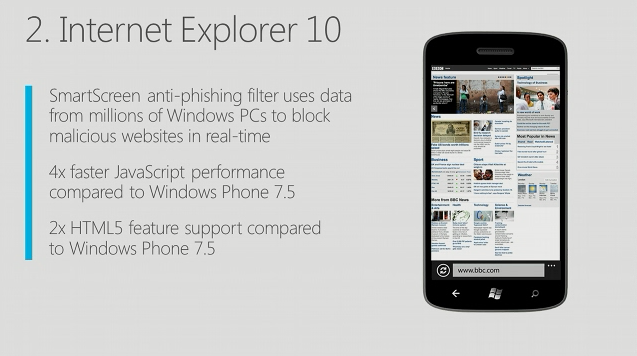
Internet Explorer 10 is coming to Windows Phone 8 — the same rendering as the desktop version. So authors can create webpages, including Javascript and HTML5, on the desktop and not worry about having to re-create them for mobile. They will just work.
Performance in the new IE10 Mobile will be competitive in Javascript speeds, as it currently beats any other browser in the Sunspider speed tests.
Improved native support for games is incoming, too, with a new NDK for developers and a “freaking awesome gaming experience,” according to Microsoft. There will be a lot of shared code in DirectX between the desktop version of Windows 8 and Windows Phone 8. “More apps, bigger, important apps coming faster, and more beautiful games.”
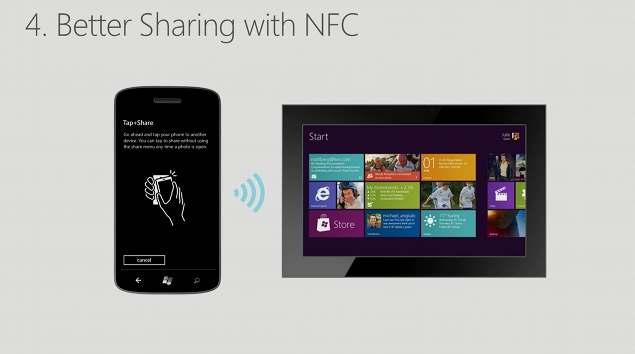
Microsoft is adding native NFC support to Windows Phone 8 — and Windows 8 — and will enable sharing scenarios between the phone and the PC. They also want to have the most complete wallet experience — competing directly with Apple’s Passbook in iOS 6 — by allowing for secure payments inside the SIM card. This is the method that RIM, Rogers and CIBC are using for their new payment app coming this year.
Every Windows Phone will include the Wallet hub, you will be able to get the benefit of all third-party apps (even if your carrier doesn’t support secure payment, though they’ll try to get carriers involved). We’re not sure how that will work in Canada, but we’ll reach out to Microsoft for more information.
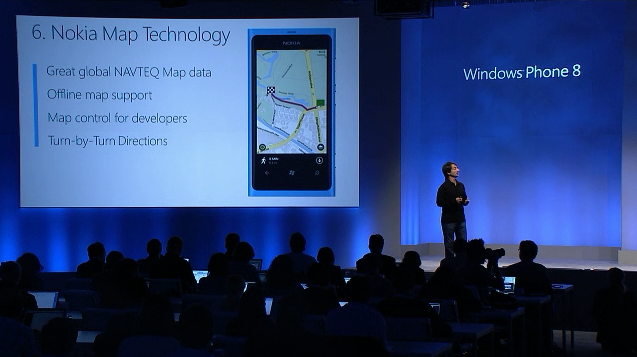
Another very cool announcement is that Windows Phone 8 will bring Nokia Maps natively to the new operating system. There will be “complete local information” in Maps thanks to NAVTEQ, and they will work offline (something that only Nokia phones have access to right now) in all phones, not just the Lumia line. This also includes turn-by-turn navigation to all devices, not just Lumias.
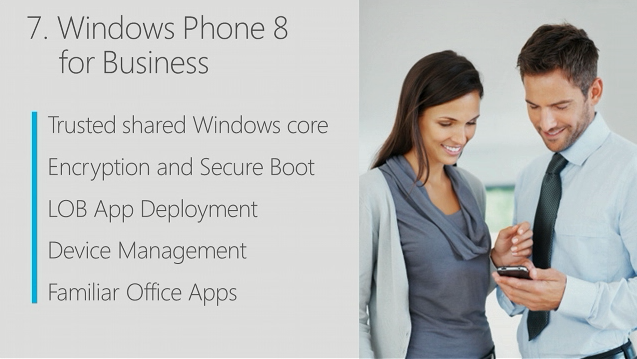
Windows Phone 8 will support encryption and secure boot, much better for the enterprise, something that Microsoft acknowledges wasn’t full-featured in WP7. IT administrators want to sign and deploy applications without going through the Marketplace, which is coming as well to Windows Phone 8. More: remote device management with the same tools as they use to administer Windows PCs. Also, better integration with Sharepoint.
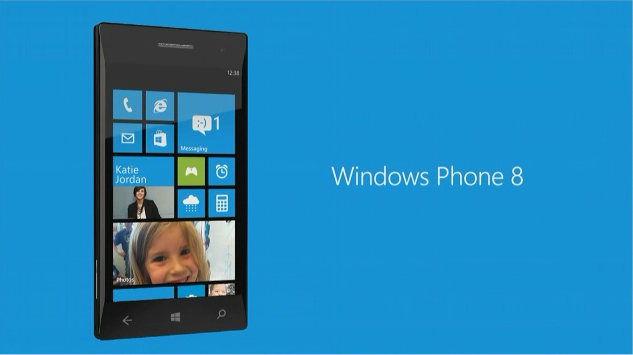
To some users, this will be the biggest change in Windows Phone 8. The start screen is changing, with customizable sizes for Live Tiles and much more bespoke offerings per tiles.
You’ll be able to press-and-hold a tile on the screen to adjust the size of the tile, though it never goes “dead.” All tiles, regardless of size, will stay Live Tiles. There will also be more colours available to users.
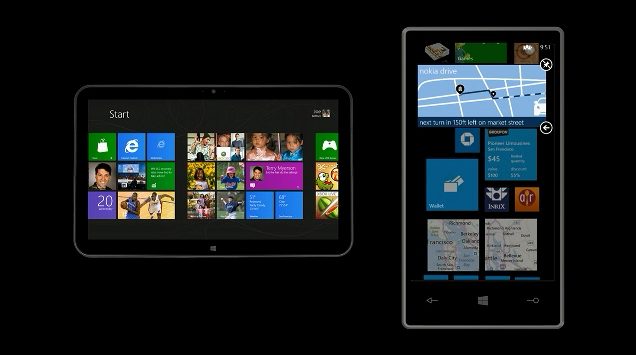
Microsoft is bringing many of the best GPU-accelerated features from Windows 8 and Internet Explorer 10 to the mobile platform as well. So, expect many of the 3D effects that we’ve come to love on desktop to perform great on WP8. If you’re hoping for Flash, however, forget about it.
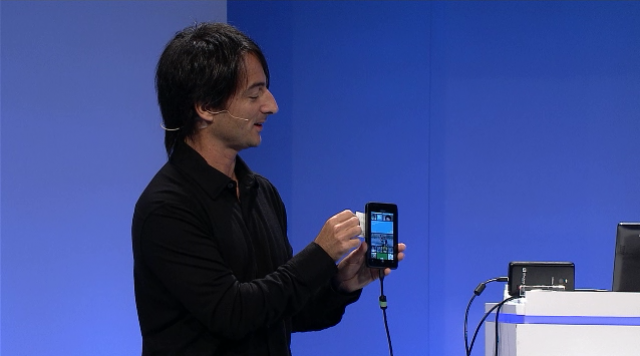
One of the coolest demos shown off at the conference is the ease at which the phone communicates with NFC tags. Joe Belfiore showed off a NFC-enabled business card that was pressed up to the demo Windows Phone 8 device and how the handset interpreted the data and added it directly to the People hub. Like Android Beam, Microsoft is adding a “tap-and-send” feature to the Sharing menu which allows NFC-compatible handsets to share data directly.
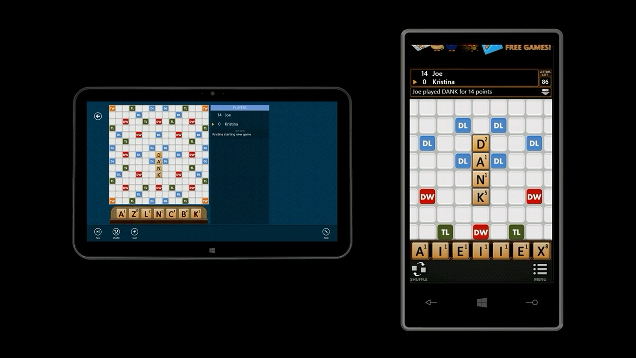
The NFC capabilities are shared between Windows Phone 8 and Windows 8, too. Games can be initialized between two devices on separate operating systems, and developers can easily port code from one OS to another — the developers who made SpellIt for Windows Phone 7.5 ported it to Windows 8 and Windows Phone 8 in two days, and added NFC to boot.
Developing… refresh for more.
MobileSyrup may earn a commission from purchases made via our links, which helps fund the journalism we provide free on our website. These links do not influence our editorial content. Support us here.


